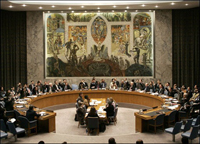The marocanity of the Sahara: one of the constant postulates of the kingdom
 Morocco had claimed the return of the Western Sahara to the motherland since recovering its independence in 1956. The kingdom had engaged at that time the necessary diplomatic steps before the international instances.
Morocco had claimed the return of the Western Sahara to the motherland since recovering its independence in 1956. The kingdom had engaged at that time the necessary diplomatic steps before the international instances.On February 25, 1958 in Mhamid El Ghezlane (current province of Zagoura) deceased king Mohammed V, in a historical speech, fixes the way “We proclaim solemnly that we will continue our action for the return of our Sahara in respect of our historical rights and in accordance with the will of his inhabitants”.
His successor king Hassan II and the Moroccan people remained faithful to this determined political line.
Morocco retrieved the Sahara in 1975 under the Madrid accords signed with Spain and Mauritania. Seized in October 16 1975, the International Court of Justice recognizes “that the Sahara was not a territory without Master (terra nullius) at the time of its colonization by Spain and that the Sahara had with the Kingdom of Morocco legal ties of allegiance”. Hassan II took note of this recognition and decided the launching of the famous “Green march”. In his memorable speech to the nation in November 1975, the late king Okayed the starting of the march.
The “Green March” was devised in a philosophy of peace to liberate and reunite the southern provinces with the motherland Morocco and the extent of the popular mobilization is explained therefore by the nature of the demand; it is a matter of reconstituting the national heritage.
But morocco was victim of conspiracy: A revolutionary movement for the independence of the Sahara suddenly was born, a pseudo entity called SADR which much of its founders never believed in it and who ended up joining the motherland after having find out that they were puppets of the master, Algeria…
Sahraouis families were brought by force to the camps of sequestration in Tindouf supplemented by Algerian elements.
Therefore, the retrocession of the Sahara to Morocco is in conformity with the historical and legal titles of Morocco and satisfies international legality through its respect of the UN resolutions, the Madrid Agreement and the population's wishes. With the reintegration of the Sahara to the mother-country, started an unprecedented development of this part of the Kingdom…
